Mark Golley's weekly birding round-up: 27 Apr - 03 May 2016
Here we are then - with a fanfare akin to a lot of men in wacko pompous outfits all holding big brass trumpets to herald some posh old granny’s birthday - May has entered the room.
Whoooopeee!
Expectations edge up, incrementally, day by day as April concedes ground to the oncoming belle of the spring ball - and given the weather of the last few days, May was a much needed boost to a flagging system.
Sunshine and showers were still a significant feature of the conditions encountered over the early part of the week just gone, the cold air circulating from the northwest taking the edge off any sunny spells that came along (there were many of them, often pretty prolonged too).
Then, ahead of the weekend, a low pressure off northwest coast of Ireland brought a fairly hefty doze of precipitation along with it as it headed eastwards - and as it fell, the cold air turned things somewhat snowy across parts of Ireland, northern England and south-central Scotland.
Winds wobbled around throughout much of the long weekend and although temperatures rose a little, there wasn’t too much of a migrant corridor in any real hurry to open up - winds stayed mostly in the west and the familiar pattern of sunshine and showers continued as Month #4 became Month #5.
Despite all of that, as is so often the case, the migrants, common, scarce and rare alike continued to make themselves known, although early on in the week, the main buzz came from a double hit of belated news - first was news of the continuing presence (almost) of a recent rare that just didn’t want to play the game and the second was even more mouth-watering; there’s been a Big Blue Rattler around!
…but even that huge rare-report was usurped by the early weekend news of an exceptional ringing discovery in the northwest of England.
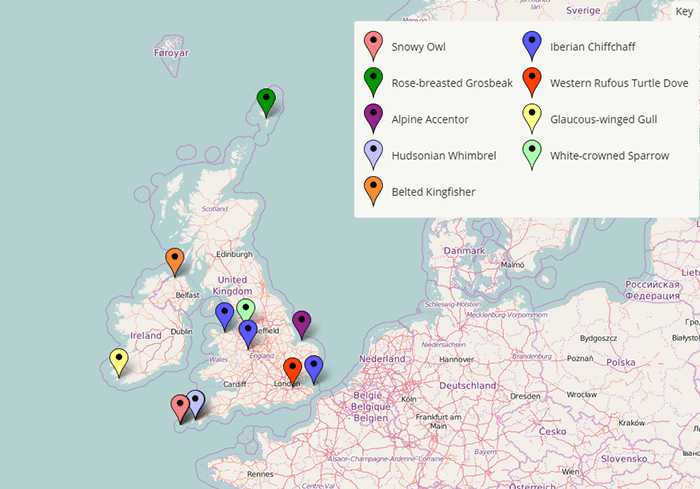
As if by magic, for the first time this year, the occasional words of wisdom that come forth to round things off at the end of each review actually hit the spot this week - it just felt and looked right for a Nearctic cracker to materialise somewhere on this side of the Atlantic - the northwest and westerly airflow and the time of year simply hollered “American rare”.
…and so it was - and, also as predicted, we weren’t dealing with a cutesy, pretty, pretty wood warbler; on offer here was a rather more robust passerine in the shape of a rather fine White-crowned Sparrow that was trapped and ringed at Woolston Eyes NR (Cheshire) early in the morning of 30th.
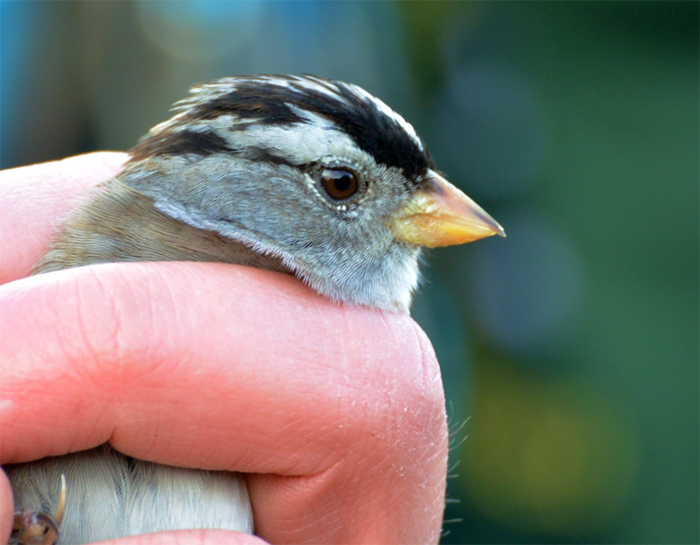
Quite whether the aforementioned weather conditions has had anything to do with this outstanding discovery is anyone’s guess, the close proximity of not only the Manchester Ship Canal and, in particular, the significant shipping route of the River Mersey may have had more bearing on the record - but ship-assisted or not (aren’t most of our White-crowned Sparrow records ship-assisted?) this was a massive bird, a county first, just the sixth for Britain and the first since 2008.
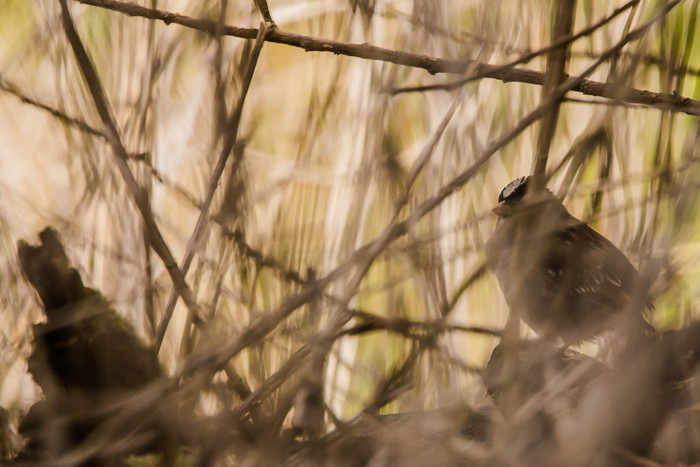
Post-release, the Sparrow went to ground for a while before reappearing close to the release site near the John Morgan Hide some 90 minutes later. A spell of some 20 minutes saw the bird show well enough to those on site and then it went missing once more and was last noted at around 11.45.
There’s a significant spring bias where our White-crowned Sparrow records are concerned; the first two for Britain were separated by just a single May week in 1977 - the first was trapped on Fair Isle on May 15th and the second was found at Hornsea Mere on May 22nd.
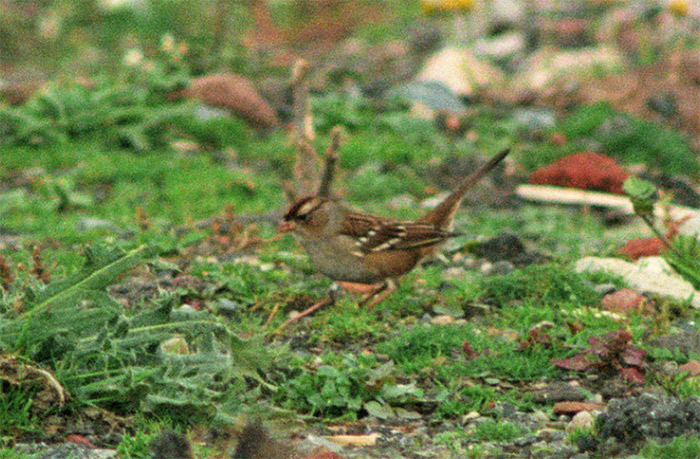
A gap of over 18 years followed until a first-winter was found close to the docks at Seaforth - a gripping one-day wonder on October 2nd 1995, a bird that remains the only autumn record here. Ireland’s one and only White-crowned Sparrow was found (tailless) on Cork’s Dursey Island on May 20th 2003 where the eight-day stay saw many birders head west, from both Ireland and Britain too…
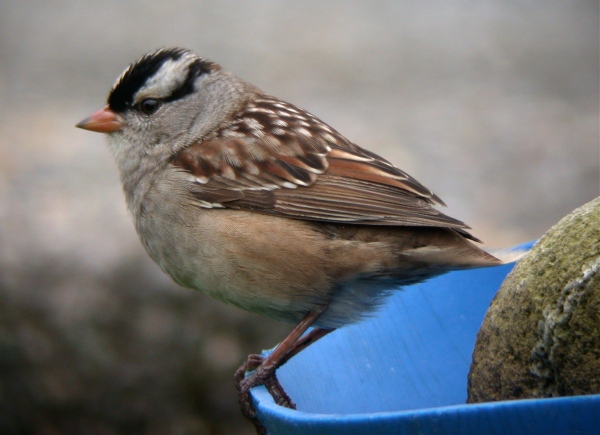
…and then came Cley.
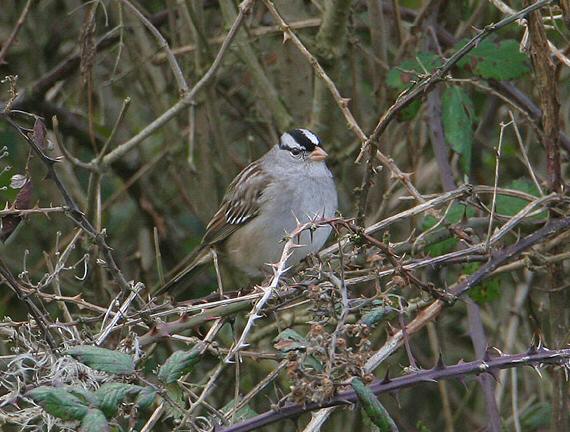
Still ranking as one of the largest twitches of all time the furtive-at-first bird was discovered in a tiny garden at the south end of the village on January 3rd 2008. Much head scratching ensued as to how to allow folk to view the bird and a hugely successful plan was concocted to try and persuade the bird in an area where everyone could enjoy this incredible winter rare. Amazingly, the plan worked and the rest is history…
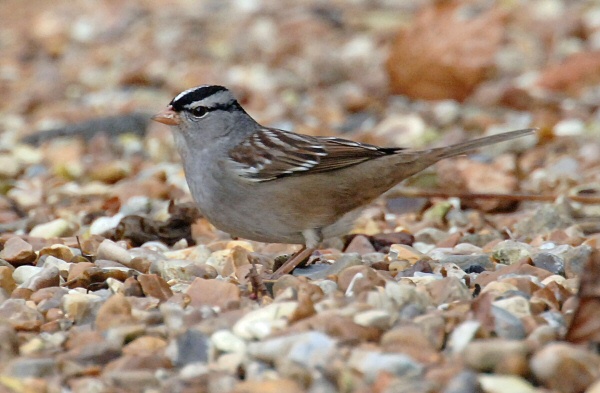
Present for 69 days, until March 11th, 1000’s of birders paid their respects to this 4th for Britain, raising over £6000 for the beautiful St. Margaret’s Church which continually overlooked the crowd.
 ...Even from a distance the head pattern was distinctive. For three years around the turn of the century I lived, birded and banded in central New Jersey and the thought passed through my mind “if I was still in Princeton I would say that was a White-crowned Sparrow...
...Even from a distance the head pattern was distinctive. For three years around the turn of the century I lived, birded and banded in central New Jersey and the thought passed through my mind “if I was still in Princeton I would say that was a White-crowned Sparrow...
Read Michael Miles finders account here
A couple of months later, the 5th British record was discovered in gardens near Leuchars in Fife, on May 17th-18th (the fourth of the six records until then to be recorded in the month). Now, by just short of 24 hours, May has just missed out on another, as April chalks up the 7th record for Britain and Ireland.
Despite all those 1000’s of the birding faithful coming to pay homage to the Cley White-crowned Sparrow there are many more folk on the scene now (just eight years on) and the clamour to see the Cheshire cracker will have been loud in the extreme - unfortunately the spuggie had other ideas.
A look at a couple of in-hand images of the Woolston bird showed not only that it was a first-summer (some brown noted within the crown for instance) but also that the pale lores and smallish looking yellowy bill suggested that this individual was (showing characters of…) the Western Taiga form gambelii - Gambel’s White-crowned Sparrow.
In the “Complete Birds of North America”, published by National Geographic” and edited by Jonathan Alderfer, the text states that gambelii breeds from western Alabama north to Hudson Bay and is a “rare to casual” visitor to the eastern seaboard. David Sibley delves deeper in to the White-crowned Sparrow complex online and, if your interest is suitably piqued, have a read here - www.sibleyguides.com/bird-info/white-crowned-sparrow
…and then compare the head shots of the Woolston bird (left in image below) and the Cley bird (right) (the latter fitting snuggly in to the Eastern Taiga form leucophyrs with the narrowish black loral line and pinky-orange bill). If only it was that easy, Sibley leaves the reader under no illusions that it could all be somewhat subjective within some parts of the region where birds resembling different forms bred with or side-by-side with each other.
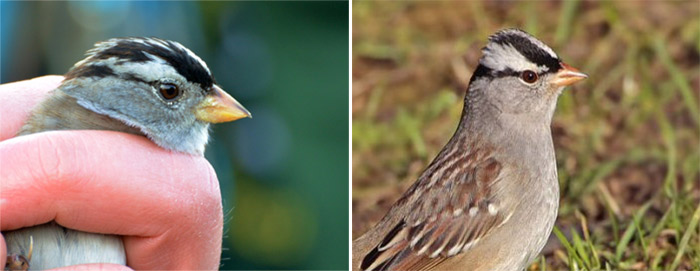
Photos of both the Fair Isle and Dursey birds also suggest Eastern Taiga-types (intergrades are widespread though) and the written description of the Hornsea bird also indicates an Eastern Taiga-type too. The young bird at Seaforth is trickier to comment upon, the record shots also suggest dark lores at least…
If this was a”1st record” of the species (and it could ever be proven to be a definite Gambel’s White-crowned Sparrow, it would be interesting to see if it would curry favour with the BOURC - given the presumed racial identification, the core breeding range and internal movements in North America (it may not be gambelii given what Sibley days), it would seem that ship-assistance is the most favoured option for this individual - not a problem to many of us, but the same committee didn’t give the Land’s End House Finch a look in. Could a Gambel’s White-crowned Sparrow be “considered capable of making an unassisted transatlantic crossing under favourable circumstances”?
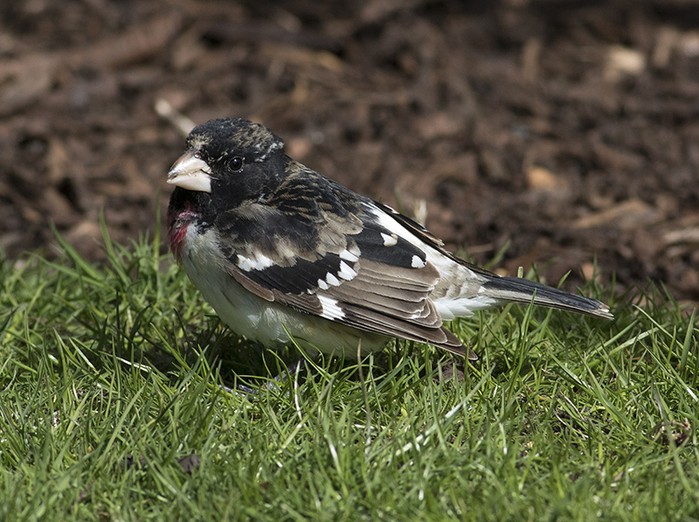
The predictometer was twitching way off in to the red by the end of the week as the second Nearctic passerine clearly not within the “cutesy, pretty, pretty wood warbler” remit was found as this latest review period drew to a close - away up in the Northern Isles, on the Shetland Mainland, came a strawberry fronted, moulting first-summer male Rose-breasted Grosbeak and what a fabulous looking thing he was too.
The bird was first noted by one of those ever-aware locals who spied this most striking of garden feeders on West Burra, some four miles southwest of Scalloway, at Toogs on the morning of 3rd. Images of the mystery visitor were posted on local Facebook groups and within a short space of time, local birders were chomping at the bit to head rapido-style to the garden, this was a much-awaited first for Shetland.
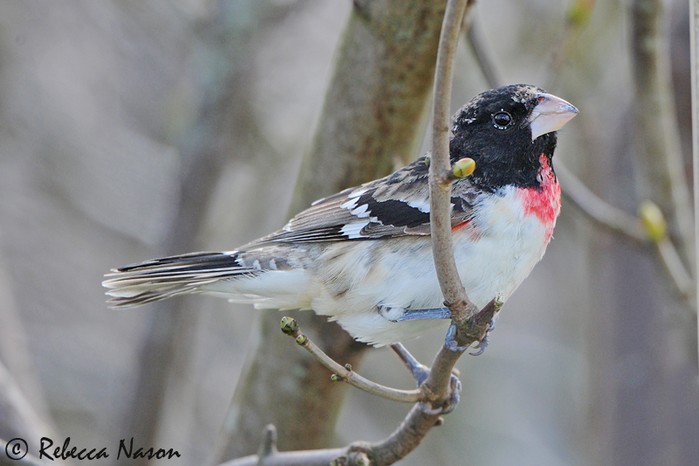
There’ve been 35 previous records (36 if you include an oil platform bird) of this beefy Transatlantic drifter to date, with the most recent being the surprise December bird on St. Mary’s (Scilly) in mid to late December 2012 - the 10th record in the last 16 years.
 ...when I glanced out across to the trees opposite and saw something which I recognised to be a bird in shape but not in colour or pattern. To be honest I thought this was a cuddly toy hung up on the tree for a joke by my husband...
...when I glanced out across to the trees opposite and saw something which I recognised to be a bird in shape but not in colour or pattern. To be honest I thought this was a cuddly toy hung up on the tree for a joke by my husband...
Read Lynn Goodlad finders account here
For many, the absolute hey-day for Rose-breasted Grosbeak was the 1980’s - a remarkable six were found in the autumn of 1983 (between October 7th-19th) with three following in 1985, with one in 1986, a further three in 1987 and one last single, on Skomer, in September 1988. Scilly has been utterly dominant with numbers recorded, that 2012 bird brought the total for the islands to 13 in all with Cork next on six.
Scottish records are extremely thin on the ground; there are two Hebridean records (on North Uist in October 1983 and Barra in October 2005) while another appeared on Orkney (at Stenaquoy, on Eday) in October 2011.
The spread of records?
It is (as you’d expect) heavily weighted to the back end of the year (there are acceptances from September through to December); there is though one further spring record, just one day shy of 10 years to the day from this week’s gorgeous Shetland newbie - and that is the shamefully suppressed, invitation-only Norfolk first-summer male that was found at Holme on May 4th 2006 (a two day bird that rankles many within the county boundary to this day…).
At the beginning of each and every April, there’s always a genteel trundle back to 2005 and that remarkable set of records of that much-twitched and hugely admired Belted Kingfisher - as the “expect the unexpected” vibe is honed at the end of the RBA rarity review in “prediction corner”. That particular 2005 adventure beginning on All Fool’s Day and lasting through until April 8th as the journey of this highly prized, exceptional looking rarity was tracked from Staffordshire through East Yorkshire and onwards to Aberdeenshire.

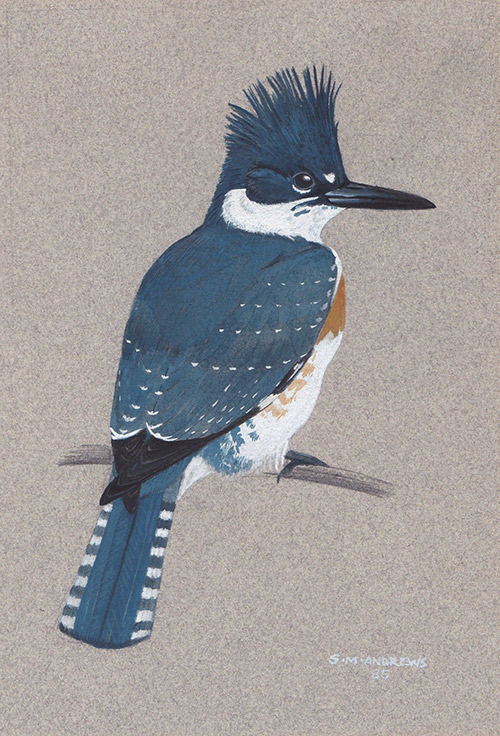
Many birders were fortunate enough to catch up with the ’05 bird but that’s not to say that the excitement levels don’t nudge into a different level on the “rareometer” when there’s news of another - and for some, that was precisely the case this week when another Belted Kingfisher made the news...this one reported by a single observer along the rivers of County Derry.
That initial blast of excitement was immediately tempered when, on reading the news, it turned out that the “current” BK wasn’t up-for-grabs at all, in fact it had been noted on Friday 22nd - almost a week earlier - on an overhanging branch along the River Bann in Derry’s Mountsandel Forest, just south of Coleraine.
Seen twice during the evening, further searches were unsuccessful but a quick look at Google Maps shows just how much lovely Belted Kingfisher habitat there is within the area and, despite their size, appearance and vocal nature, these mighty Transatlantic vagrants can be remarkably unobtrusive souls.
Opposite: Belted Kingfisher artwork - taken off the walls of my own little collection of natural history artworks, this stunning image of the Ballyvaughan Belted Kingfisher was painted for me by Mark Andrews - the two of us, plus Colin Towe, Tim Marlow and Brian Field enjoyed an epic twitch to County Clare, in foul weather, in a dinky red Datsun in December 1984. Arriving back in west Devon in the wee small hours of a Monday morning, my 6th Form tutor gave the most almighty (ahem) “telling off” when I appeared late for registration that same morning. She knew I’d been twitching, she loathed me for it but did I care? Nah…not one jot…I’d scored a Big Blue Rattler!
If accepted by the NIRBC, this will become the second record for the north - the only other record was of a shot female at Dundrum Bay in County Down in October 1980. The south has three further records, from four counties…
- County Mayo - a first-winter female, on the Bunree River, near Ballina; December 10th 1978 – February 3rd 1979 (then shot)
- County Clare - a female, at Ballyvaughan; October 28th – early December 1984
- ounty Tipperary - the same female from Clare, near Killaloe; February 6th – March 21st 1985
- County Galway - a first-winter male, at Lough Fee and then Kylemore Abbey; October 5th -6th 2012
The last Irish bird mentioned is, until now, the most recent record anywhere of Belted Kingfisher - becoming a noble “2nd prize” for many Eastern Kingbird dippers (from both Ireland and Britain) a few Octobers ago. It may not have eased the pain of not seeing the Inishmore Kingbird, but it was one heck of a compensation bird…
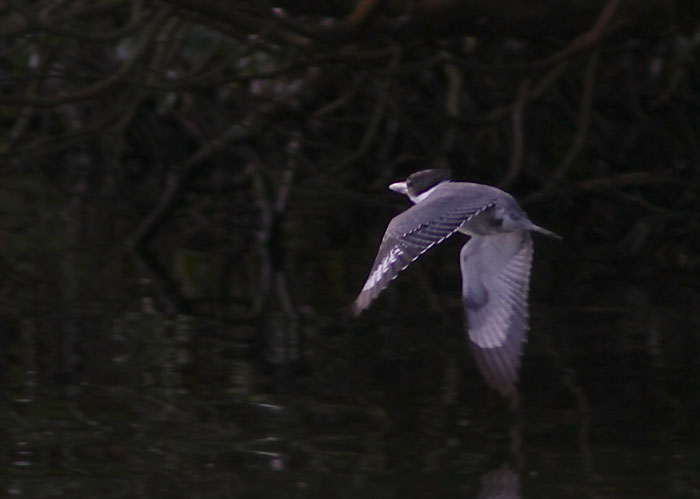
While we’re rounding up all things BK, let’s mention the remaining three records - the first for Britain and Ireland was a female shot along the river at Sladesbridge, in north Cornwall in November 1908 and, as students of rares will all know, in one of the most remarkable rare-bird coincidences, the second for Britain, a first-winter male, was found along the very same river on October 2nd 1979, where it remained to June 1980 (what was almost certainly the same bird then appeared near Penzance, at Boscathnoe Reservoir in August 1980).
Finally to where we began and that April 1st bird of 2005 - seen at Tixall and Shugborough in Staffordshire for a day, heading through East Yorkshire the following day to be relocated (in another rare-bird coincidences - the species attracts them eh?) by the son of the original Staffordshire finder at Peterculter in Aberdeenshire.
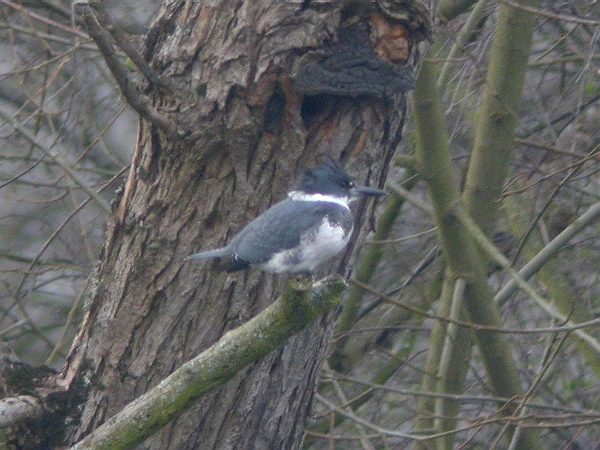
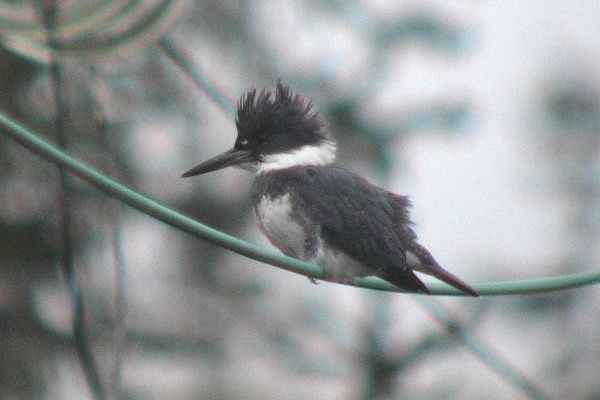
Much of what had to be said about the Western Rufous Turtle Dove (form meena) was mentioned in the review that took us from late March and on in to April.
A month ago, the presence of this still outstanding rarity emerged from the village of Otford in Kent, courtesy of a series of images taken in a local garden. The bird had initially been noted in the area during the middle of February and had been in the area through until some time in the fourth week of March.
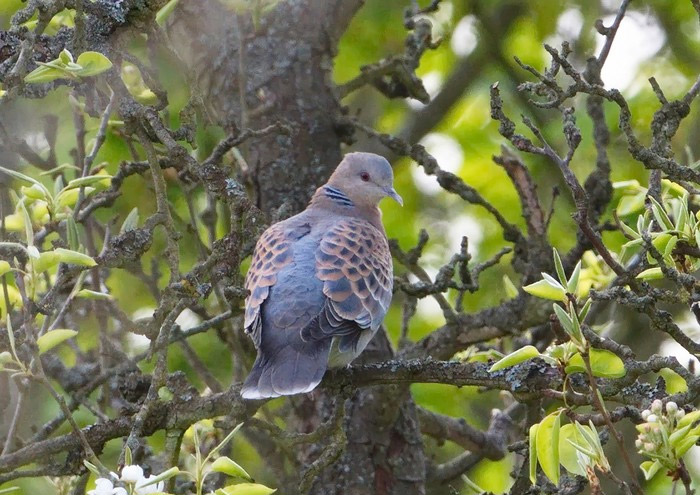
Searches in the area soon after the news broke (from April 3rd) were unsuccessful and that seemed to be that…however, as can sometimes be the way in similar circumstances, the bird apparently had other ideas and this week, the first news of 28th was that the Western Rufous Turtle Dove hadn’t been too far away as it was noted again on Sunday 24th (well, a Turtle Dove at least, as that was what was actually mentioned, but it could only really be one thing…).
This news was the cue for more garden searching by the keenest Kentish listers…cue a frustrating further lack of success.
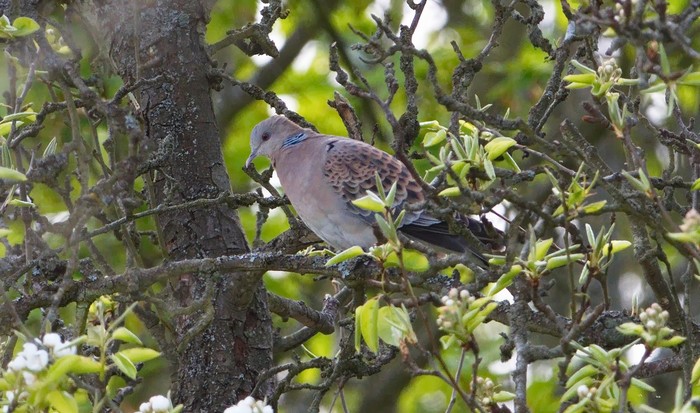
The wait went on…and as Kent recorder Barry Wright beavered away on the options as to just where and when to search, hope remained in the air as news emerged that bird was seen again - in a large garden, close to where folk have been looking, on 29th.
Then, after an unsuccessful morning on 30th, the late afternoon delivered the bird that Kentish birders had been waiting for - the Western Rufous Turtle Dove was finally on show; the 1st for the county and the second of the last six months (after the well-watched bird in Scalloway, on the Shetland Mainland. Dawn-risers on May Day scored too - as did those attending for the afternoon session and on to Bank Holiday Monday and 3rd as well - a pattern was becoming established and a desperately rare mainland bird was (finally) beginning to play the game.
The new week began on 27th with two of last week’s three Iberian Chiffchaffs singing their little hearts out in that eternal quest for a mate - Margate’s Northdown Park and Tresco’s Pool Road reverberating to the plaintive tune of these two lost souls, with the former still present to 28th and the latter still on Scilly to 3rd.
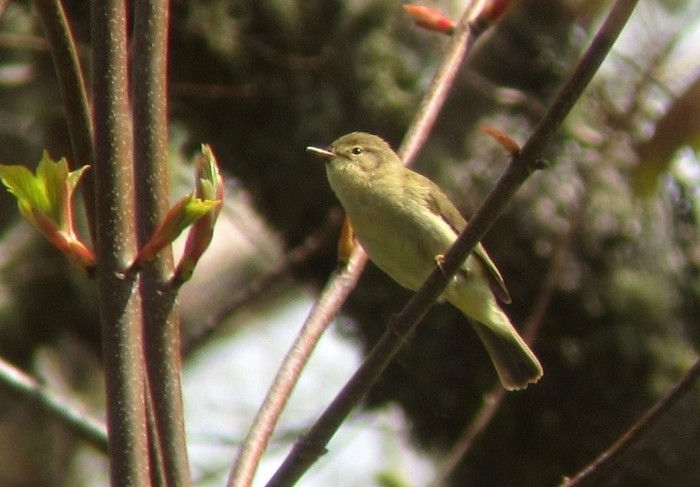
The third of the week made a late first appearance on 28th - still on song in Shropshire’s Doddington Woods, near Telford and that bird was still there over the weekend and on to 2nd, unlike the Margate bird which appeared to move on post-28th.
Back briefly to Scilly where the male Snowy Owl has been playing the favoured game hide & seek once again. This beautiful bird has already engaged in the pursuit in west Cornwall (going missing for days and days) and has now been up to the same trick on Scilly as well…
Last week the bird was seen on Bryher and Tresco daily between 23rd-26th, having been AWOL there since 18th. A search around the latter island on 27th drew a blank and viewing some favoured Bryher haunts from Tresco also yielded a big, fat zero. Then on April’s last day, he was back on show, back on Bryher and back on Shipman Head Down (after another brief sortie to Tresco) and was still there as the review drew to a close on 3rd.
After a 10-day news hiatus, someone popped along to Castletown Bearhaven this week and clocked that immense Glaucous-winged Gull - still present on 2nd and, with each day that passes, seemingly ever-more likely to reside in and around the Cork harbour for, well, maybe forever?
This magnificent looking Irish 1st has been around the same site for almost five months straight now - I’m still waiting to hear that it has paired up with a local argenteus, ready to unleash a little Laridmayhem on the west coast come August time…
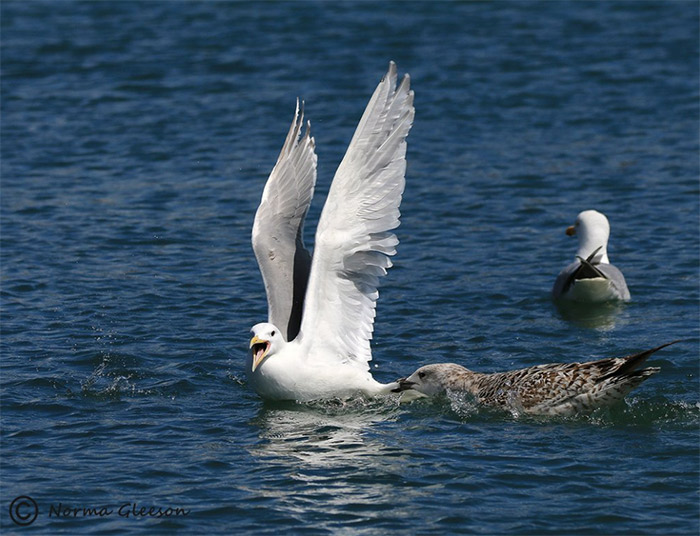
We’re up to 184 days (loosely) on site now given the news that the loitering first-winter Hudsonian Whimbrel has still yet to depart Mount’s Bay - still in and around Trenow Cove on 30th (and comfortably way out ahead in terms of “longest stayers”).
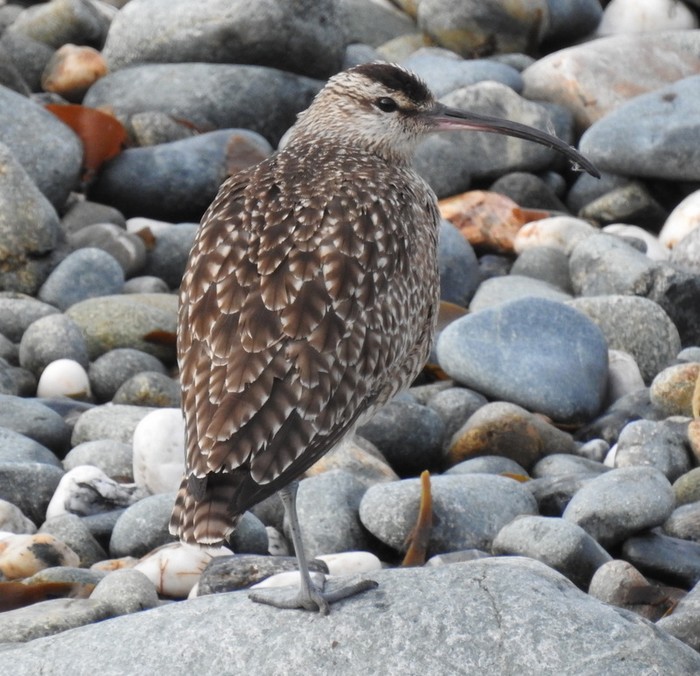
Let’s not dwell too much on this - April 13th this year had already delivered the Hampshire Alpine Accentor; now it transpires that the unlucky-for-some date had also delivered a second, found on Scolt Head Island NNR, just off the coast of north Norfolk.
Once accepted, it will become the fourth record for the county, all of them in April and three of them have now been seen in the space of the last 12 years - this year’s bird becoming the earliest Norfolk record so far.
The Alpine Accentor joins an illustrious, somewhat stellar cast from Scolt in recent years - Calandra Lark, Spectacled Warbler and Marmora’s Warbler all availing themselves to just a handful of folk out on this secretive spot.
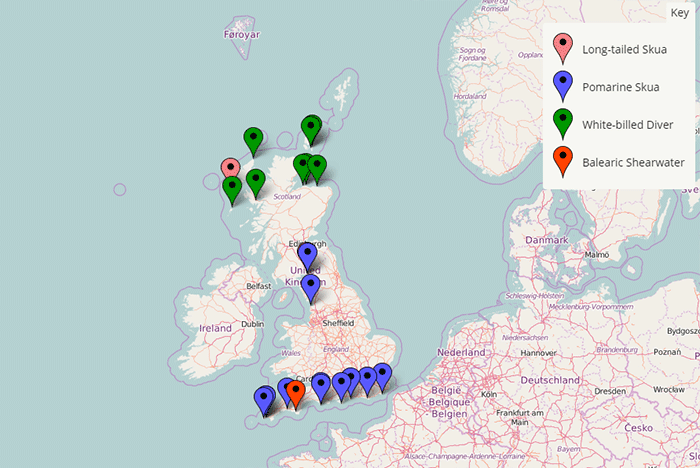
There’s been a very healthy spread of White-billed Divers around Scotland this week - at least 15 birds noted from five different counties with Aberdeenshire’s Portsoy leading the way once more, after a single there on 28th, numbers counted (from land) on both 30th and 1st were a smart five with a trip offshore on the latetr date producing a cool nine. Also on the Scottish mainland, an adult in Moray, again at Burghead on 28th-29th with perhaps the same bird drifting some seven or eight miles to the east north-east, appearing off Lossiemouth on 1st.
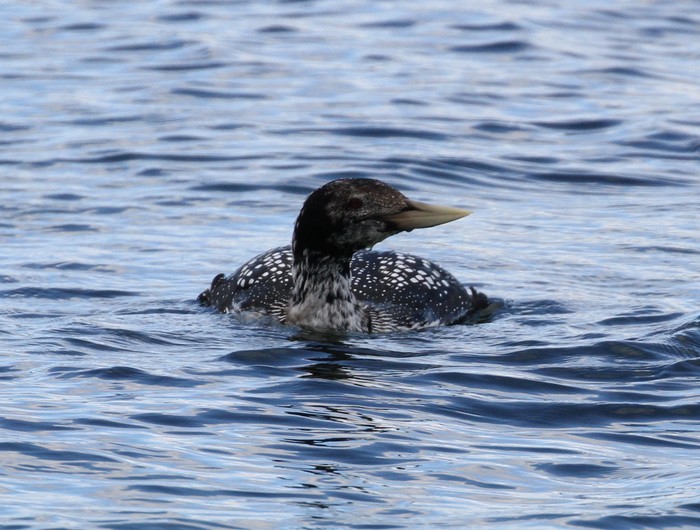
In Highland, on the Isle of Skye, a new White-billed Diver was at Camas Mor, Bornesketaig on 30th while further to the northwest, over on the Outer Hebrides, further lone birds remained at Port Skigersta, Lewis to 29th while to the southwest, on Barra, another was still at Eoligarry until 1st.
Our final two banana-billed beauties were across on Orkney, both on South Ronaldsay, both seen on 28th; the recent bird was at Herston while an old favourite was seen again near St. Margaret’s Hope (the former bird was on station to 29th, the latter to 2nd when it was seen at Burray).
After a glimmer of action from within the relevant cutlery drawer last week, the past seven days started with barely a Pomarine Skua to mention - but by the end of the week some 40 in all were noted to 2nd - and then things changed...
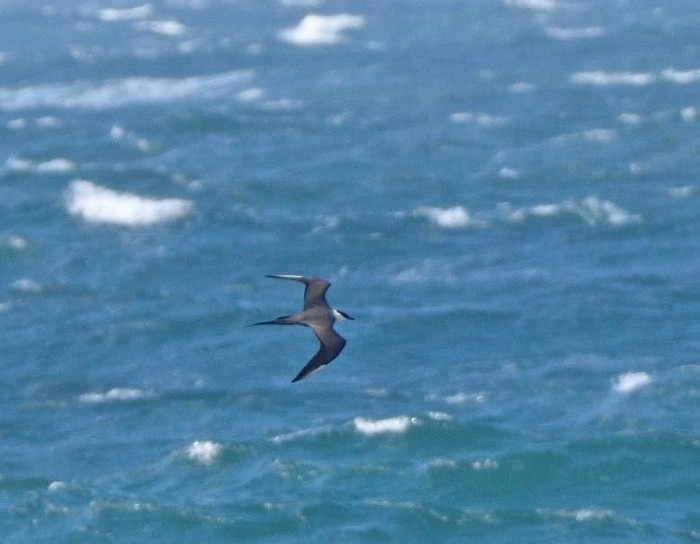
First was a loner past St. Catherine’s Point (Isle of Wight) on 28th and another straggler was off Portland Bill (Dorset) on 29th. May Day saw two’s head by Sandy Cove, Newlyn and Porthgwarra (Cornwall), Portland Bill and Dungeness (Kent), with singles off Cornwall’s Downderry, 30 miles out from West Sussex’s Selsey Bill and Cumbria’s Bowness-on-Solway. Two more singles passed Chesil Cove (Dorset) on the morning of 2nd and they were followed by two Cornish singles, one off Thurlestone (Devon), seven off Dungeness, five off Bowness-on-Solway, five through the afternoon off Splash Point (East Sussex) and seven off Dungeness.
The weather suddenly started to favour the Outer Hebrides during 2nd - and by the end of the day at least 67 Poms were seen from Balranlad RSPB, North Uist with an impressive 347 the following day.
Moving with them, an early smattering of Long-tailed Skuas; two were seen off Balranald on 1st, one was seen on 2nd and then eight were counted on 3rd. A singleton was seen from the mainland too, off Newbie (Dumfries & Galloway) on 3rd.
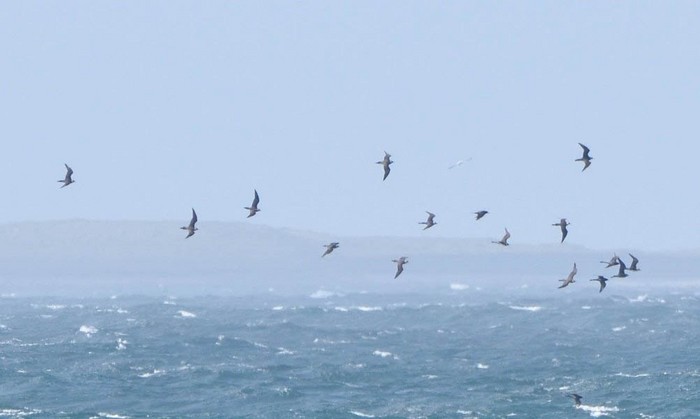
There was also scant return on Balearic Shearwaters - that said they ought to be somewhere altogether different now - just three noted, heading past Chesil Cove (Dorset) on 29th and Thurlestone on 1st and 2nd.
…and that was that…
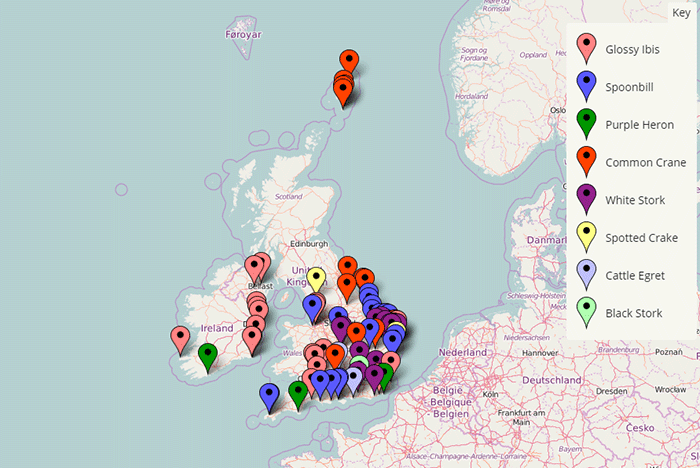
As well as landing the ultra-long-odds option of an American/Canadian passerine in a sparrow-stylee at the end of last week’s meander down the dusty hallways that contain Old Rares Almanac, further predictive smart-arse-ery loomed large in the shape of the “optimum flutter for the week” - yep, that one fell in to place as well thanks to the Black Stork seen heading southwest between Leith Hill and Ranworth Common (Surrey) during the late morning of 28th.
If accepted, it will be the second record of this ever-entertaining overshoot in the county within the past nine months; one was photographed drifting over Staines Moor on September 18th last year, that in turn was the third-ever record for the county.
As mentioned at the end of the review seven days ago, this is a great time of year for Black Stork - there’ve been 17 accepted records in the time frame of April 27th to May 3rd and now we may have had #18.
In West Sussex, a White Stork was seen heading south over Pulborough Brooks RSPB on 27th and a morning commute around the M25 the following day was enlivened for someone by the bird that headed over the motorway near Watford (Hertfordshire). For the third week in a row, a White Stork was seen in Leicestershire, this time at Burbage on 2nd while the week ended with a Kentish bird, high over Walderslade on 3rd.
Norfolk duffers were still in the west and east of the county, while the two over Lyng in central Norfolk on 30th is more interesting but ultimately tainted by those free-flying captive birds.
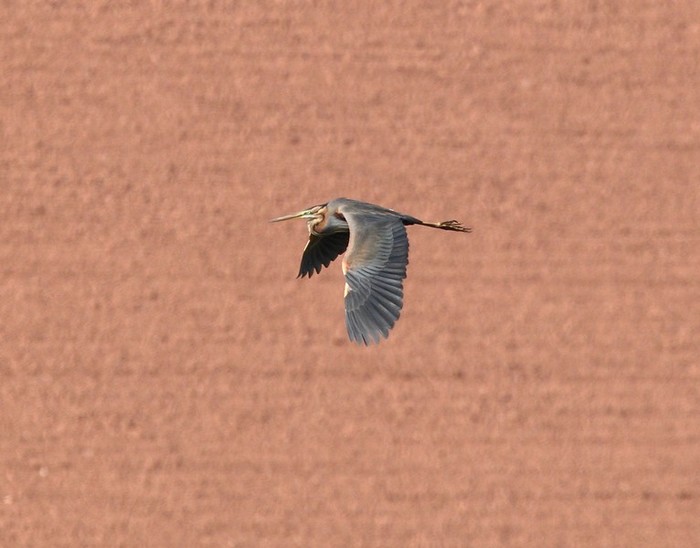
The new week began with the two Purple Herons still in place at South Huish Marsh (Devon) and one of those remained through until 29th. Three new arrivals were found - one was at Clogheen Marsh (Co. Cork) on 27th, another made it to Dungeness on 28th and the following day saw the fifth of the week head north from Hollesley Bay RSPB (Suffolk).
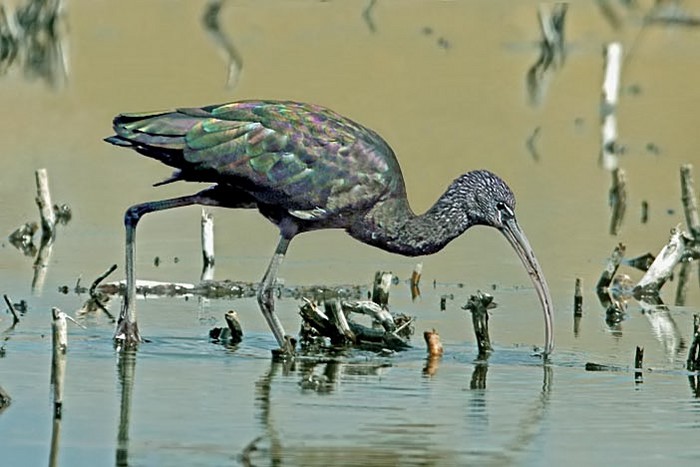
There was a sharp rise in the number of Glossy Ibis logged through the past seven days - upwards of 17 noted (up for nine or ten a week ago). At least eight were seen on 27th; back again, after over three weeks away, was the bird at Pett Levels (East Sussex) and another absentee was also back at Gowy Meadows CWT (Cheshire), having last been seen there on March 5th (it moved back to Hale on 2nd) while others remained at Seaton (Devon), Ham Wall RSPB (Somerset), Goldcliff Pools NR, Newport Wetlands (Gwent) and new birds were at Pegwell Bay (Kent) and two were at Carryduff, to the southeast of Belfast, on the Antrim/Down border.
These last two reappeared at the East Coast NR, near Newcastle (Co. Wicklow) on 28th, where they remained to 1st with further Irish birds in Wexford, three now at Cahore (from 29th) and one still at Tacumshin (from 29th-2nd) with another at Ring Marsh on 2nd, whilst other east coast loners were at both Bray (Co. Wicklow) and North Bull Island (Co. Dublin) - noted on 29th - and then at Portmore Lough RSPB (Co. Antrim) on 1st-2nd.
Two new Glossy Ibis came “in-off” at Winterton (Norfolk) on 29th (a busy day for the species) with the final new arrival this week also making itself known on the same day at Slimbridge WWT (Gloucestershire).
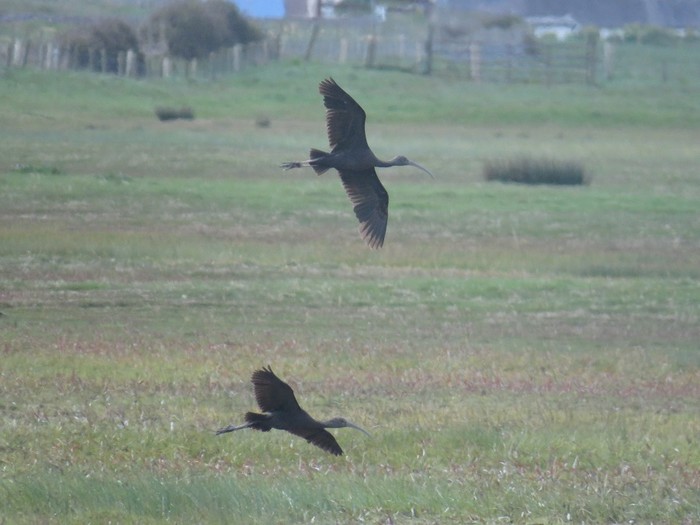
Just the one Cattle Egret to note now, still at Pagham Harbour (West Sussex) until 28th.
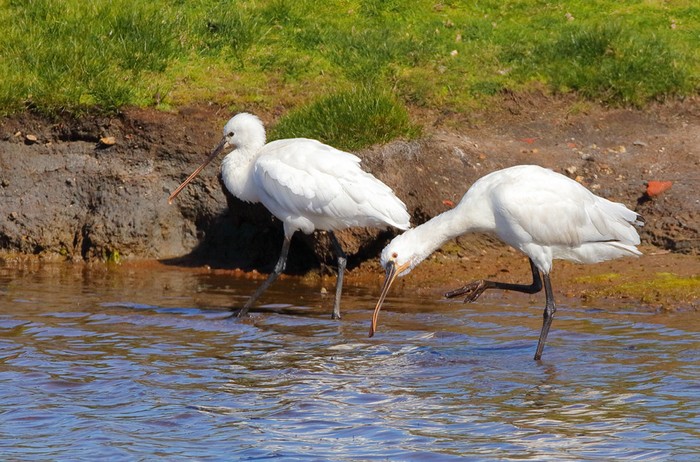
There were 18 Spoonbills spread across 10 counties this week, with three at Minsmere RSPB on 1st the “highest” total noted while Norfolk hosted a minimum four at three sites. Two birds headed over Sammy’s Point (East Yorkshire) before tracking south along the Lincolnshire coast to firstly, Donna Nook and then Gibraltar Point on 1st. Dorset and Hampshire had two birds each with further singles spread thinly from Cornwall to Cheshire and included inland birds at the Ouse Washes RSPB (Cambridgeshire) and Willington GPs (Derbyshire) on 30th.
A party of three Common Cranes arrived on the Shetland Mainland this week, initially seen near Sandwick on 27th they were noted at Toab on 28th and then Bigton on 29th, with a lone bird at Scalloway on 30th with a further singleton still up on Unst, at Snarrovoe (which had first been noted on 24th).
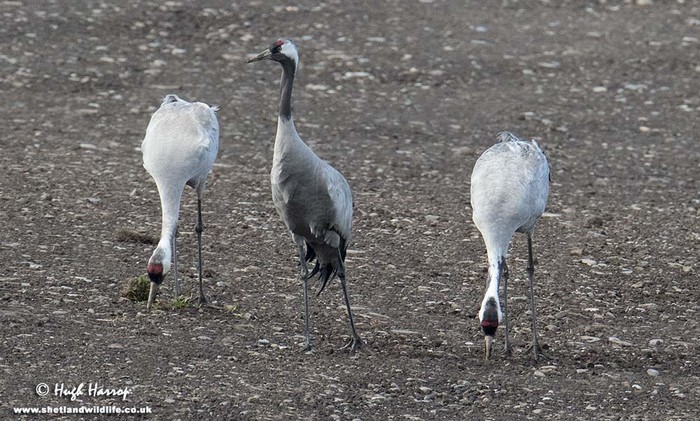
In East Yorkshire, two birds were at Flamborough Head on 29th and one was noted there the following day, which had also been noted at Buckton. Over in Noryh Yorkshire, a Crane was noted near York on 28th when further lone birds were reported from Swindon (Wiltshire) and in the Fens, at Lakenheath (Suffolk). Not too far away, at the Ouse Washes in Cambridgeshire, two were seen on 29th while the final two birds of the week were singles at Stanwick (Northamptonshire) and Hicklin Broad NWT (Norfolk), both on 2nd.
It was still “as you were” for the two Spotted Crakes reported through the week - songsters still in the reeds at Leighton Moss RSPB (Lancashire) and Reydon (Suffolk) to the week small hours of May Day, with the latter still around on 3rd.
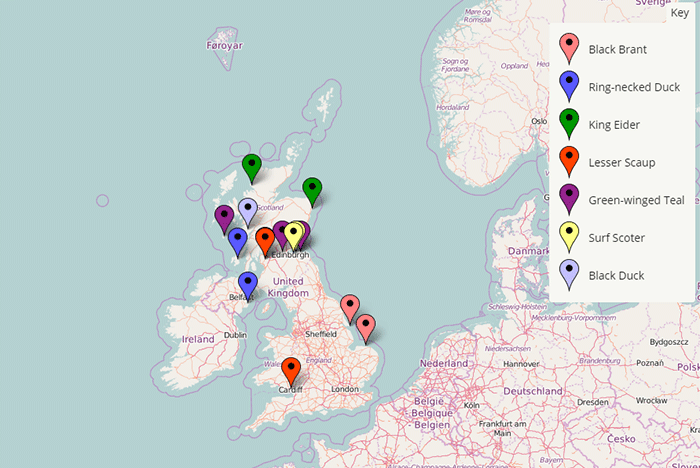
Back again after just a few days absence (this time) was the drake Black Duck in Highland, located again at Strontian on the morning of 27th.
This week saw the third appearance in Britain of the Portuguese nasal-saddle bearing drake Lesser Scaup in the space of just over 18 months - bird “VH” appearing on Barr Loch (Clyde) on April 30th, where he remained to May 1st at least.
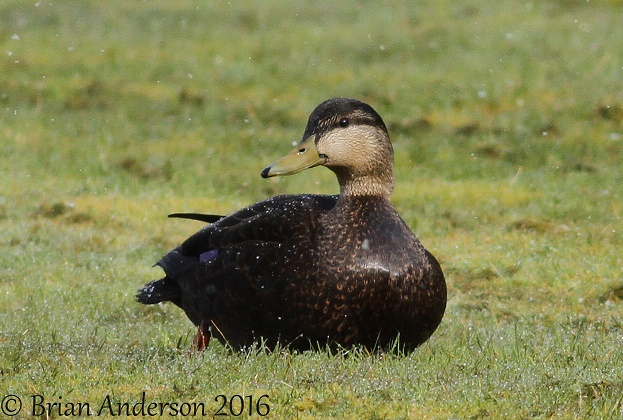
So far, this vagrant duck has clocked up a fair few miles - initially he was trapped and “saddled” (as a juvenile male) at the São Jacinto Dunes Nature Reserve (on the coast of Portugal, to the south of Porto) on December 20th 2013. The following autumn, the bird was located around 1000 miles away, at Llangorse Lake in Powys, on October 18th 2014 - and this was where he wintered until February 24th 2015.
A little over two months later, this wandering Lesser Scaup reappeared in West Yorkshire, on Wintersett Reservoir from May 4th-17th and now, almost exactly a year on, his fourth Western Palearctic nation has been added to the growing list, thanks to his discovery in central Scotland (becoming the ninth record - at least - for the county).
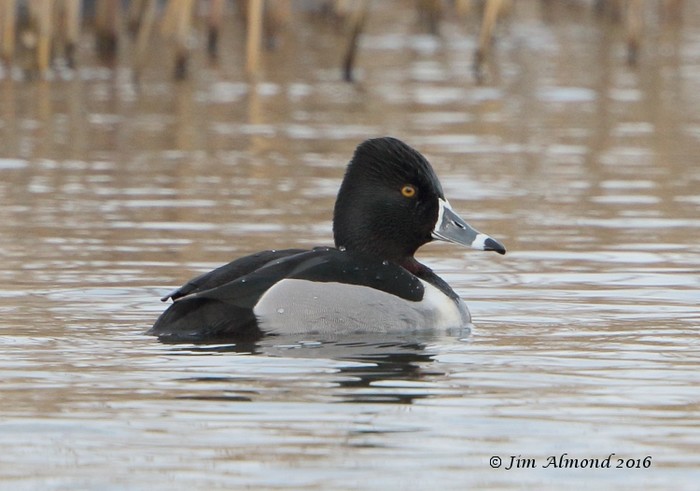
Coming as less of a surprise was the news of the continuing presence of the drake Lesser Scaup that remained at Cardiff Bay Wetlands NR (Glamorgan) through until 2nd while there’s just two Ring-necked Duck to mention, a drake on Loch Finlaggan, Islay (Argyll & Bute) on 29th and another male still at Castle Ward NT (Co. Down) on 2nd.
Scotland also hosted all four of the week’s Green-winged Teals - one was back again at Kinneil Lagoons (Forth) on 28th with a new bird to the west, at Lochwinnoch RSPB (Clyde) on the same date. Back over on the east coast, at Tyninghame Inner Bay (Lothian) one was still present on 30th and the second new bird of the week was found in Argyll & Bute, on Tiree, at Loch Bhasapol on 1st.
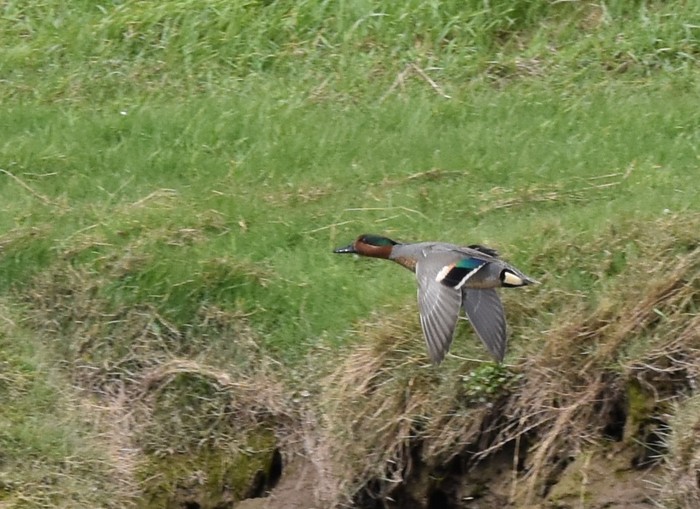
We’re down to just one drake Surf Scoter now, seen off the coast of Lothian, at Mussleburgh on 28th and then in Gosford Bay on 30th and it was “ditto” for King Eider too; a drake setting up for summer on the Ythan Estuary in Aberdeenshire on 28th was the only record of the week (although the Highland drake was reported close to Achiltibuie on 2nd).
Out on the saltings near Blakeney, a Black Brant was found on 27th with some 100 or so bernicla cousins (presumably its the same bird that’s been seen recently near Stiffkey) - it was seen again around the Blakeney bank on 29th too. Just one other Brant was noted, still around Spurn and the Humber Estuary until 3rd.
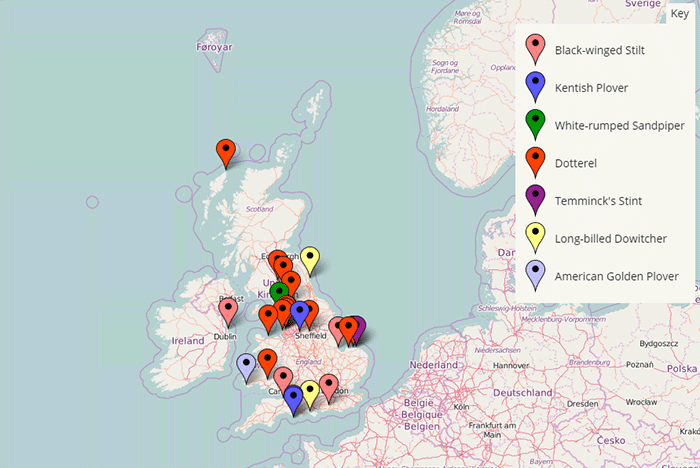
Black-winged Stilts are becoming an ever-more frequent part of spring on the south coast nowadays and Bank Holiday Monday dropped a mighty flock of 10 on to the pools at Pulborough Brooks RSPB (West Sussex) - a decet that equalled the record arrival of birds on the Isle of Wight and then Kent (at Brading Marshes and Dungeness) in April 2014. That spectacular gathering quickly dispersed and no doubt accounted for the assorted breeding pairs that were noted through the rest of the spring and summer.
#rspbFrampton eve- black-winged stilt opp. VC, whinchat, corn bunting and garganey at res. Little owl at barn by res pic.twitter.com/I9x4IKQTG9
— Jack Dawson (@UK_TeenBirder) May 3, 2016
Earlier in the holiday weekend, two further Black-winged Stilts had spent some early morning time of 30th at Steart WWT (Somerset) before flying off - there’ve been 13 previous records from the southwestern county, totalling 17 birds in all and this weekend’s twosome are the sixth record in Somerset within the past eight years. There’s one more to mention too - a female at Frampton Marsh RSPB (Lincolnshire) on 3rd (four of the county’s six most recent records have now come from the same coastal site).
Black-winged Stilt - from the Hangar at RSPB Pulborough Brooks. #rbnSXW pic.twitter.com/Uzox16cHDy
— David Buckingham (@DbLoxia) May 2, 2016
The first American Golden Plover of 2016 was a neat looking first-summer found at Angle Bay (Pembrokeshire) on 29th - amazingly (given the geography and number of other Nearctic shorebirds seen there) this is only the second record for the county, the first being noted on Skokholm in September 1981. A big local rare indeed…and also an age that isn’t commonly encountered here, so hat’s off to the sharp-eyed finder too.
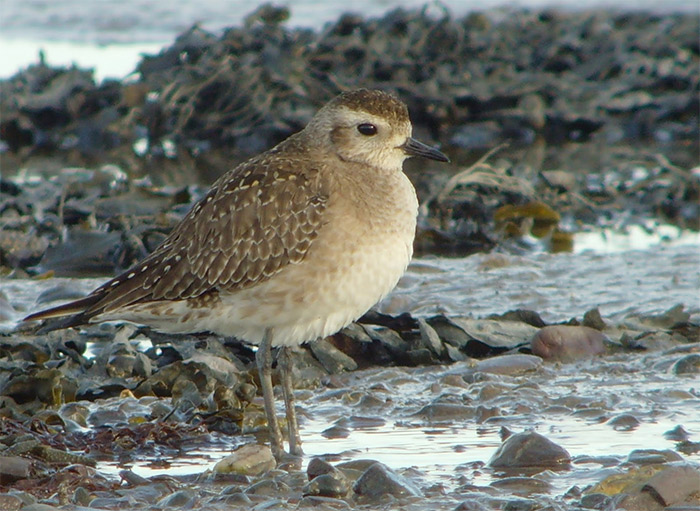
Further Nearctic shorebird overshoots this week came along to the west coast of Scotland and also England; a Lesser Yellowlegs dropped on to Islay’s Loch Gruinart RSPB on 2nd and a White-rumped Sandpiper made it Walney Island (Cumbria) on 3rd (the latter species being the first Cumbrian record in almost a decade, since July 2007).
Another 2016 debutant was the neat Temminck’s Stint that arrived on the Cley NWT Reserve (Norfolk) on 27th with it or another appearing three days later a little further to the east, on the wet marshes close to the Serpentine.
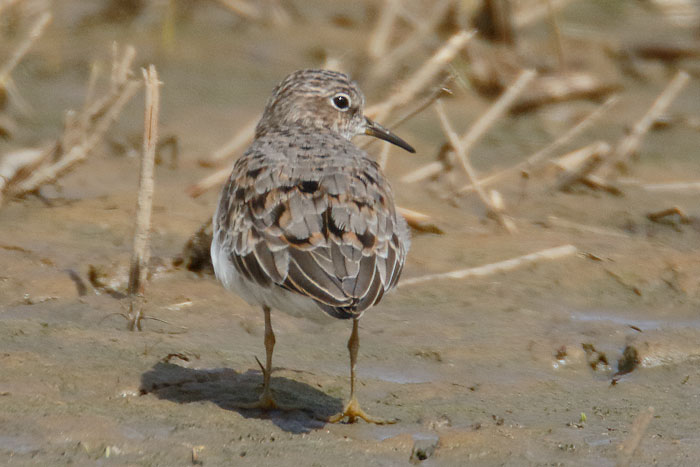
After the northwest was graced with the outrageously showy male Kentish Plover on the walls of the Audenshaw Reservoirs, this week’s sole representative spent a day in the more expected confines of Dorset’s Ferrybridge; a male showing nicely around the Fleet until at least lunchtime on 1st.
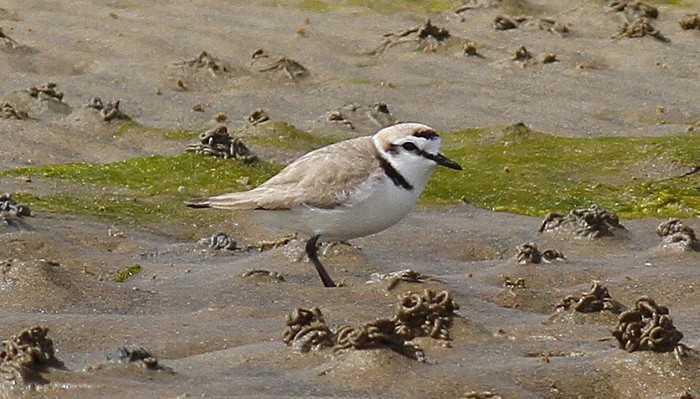
The traditional Dotterel trip-stop in west Norfolk, across the rolling fields near Choseley scored this week when seven birds arrived on the morning of 1st rising quickly to 13 the next day and then 18 by 3rd. A further 29 were noted through the rest of the week; almost all of them along the western side of the country.
Exceptions were the single male that remained near Stocksbridge (South Yorkshire) to 2nd (with a second there on 2nd), the lone bird on Sheppey (Kent) on 30th and another four in north Norfolk, at Warham from 2nd - the remaining Dotterels were noted as follows; the 27th saw three appear near Mere Sands Wood (Lancashire) and they were followed by two at Burgh by Sands (Cumbria) on 28th, six at Lockerbie (Dumfries & Galloway) on 29th, one at Tair Carn Uchaf (Carmarthenshire) and two at Hightown on Merseyside on 30th, one at Great Ormes Head (Conwy) and three more at Ormskirk (Lancashire) on 1st with four more in Cumbria, again at Tebay on 2nd when one made it to the Butt of Lewis (Outer Hebrides).
Wrapping things up the final dates for our two favourite first-summer Long-billed Dowitchers - the Cresswell Pond bird appears to have stuck it out in Northumberland until 27th while in Hampshire, the Pennington Marshes individual was logged until 28th.
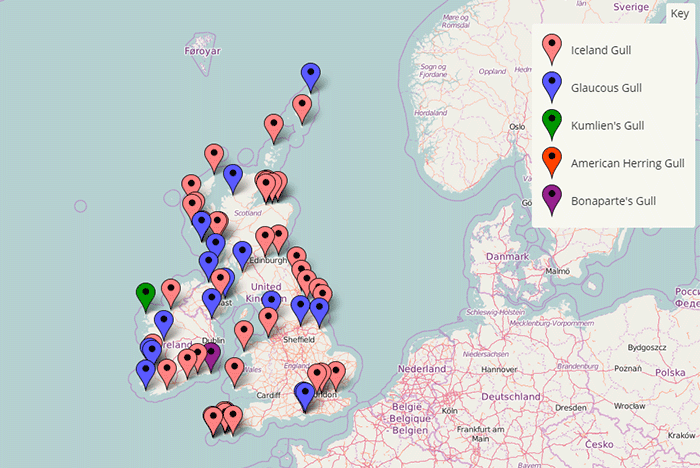
Popping up for the first time in ten days or so in west Cornwall was the first-winter American Herring Gull that was seen again at Drift Reservoir for a short time on 2nd.
Wexford held on to the adult Bonaparte’s Gull at Tacumshin, seen a couple of times through the day on 30th (having been seen on 23rd and 26th last week).
Glaucous Gull numbers crept up by one this week, 14 birds recorded in 12 English, Scottish and Irish counties. Three were in England (from Hampshire to West Yorkshire) and five singles were seen from Ayrshire to the Hebrides and Shetland in Scotland while two of Ireland’s half dozen were at Galway’s Nimmo’s Pier and another two, both singles, were in Kerry.
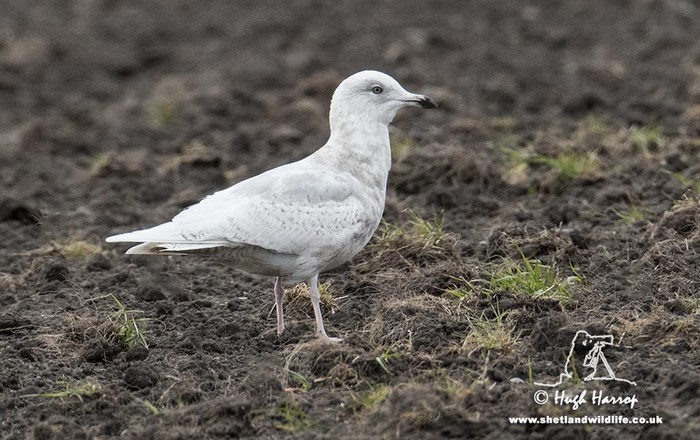
Holding there on as May arrived was Iceland Gull, at least 35 on the books this week spread widely across 24 counties in four nations.
England and Scotland held 12 and 11 birds respectively (in eight counties each) with three in Cornwall, up to three on Scilly and singles spread from London to Cleveland and Northumberland for the former country, with the latter seeing three in Moray, two in Shetland and further singles noted from Lothian and Fife to the Hebrides and Orkney. Three of the 11 Irish birds were at Nimmo’s on 30th with two in Waterford and Sligo and others in Antrim, Cork, Kerry and Wexford. Wales managed two, on the west coast in Pembrokeshire and the northwest, in Gywnedd.
On the Mullet, the adult Kumlien’s Gull was noted again on 2nd, seen near Belmullet.
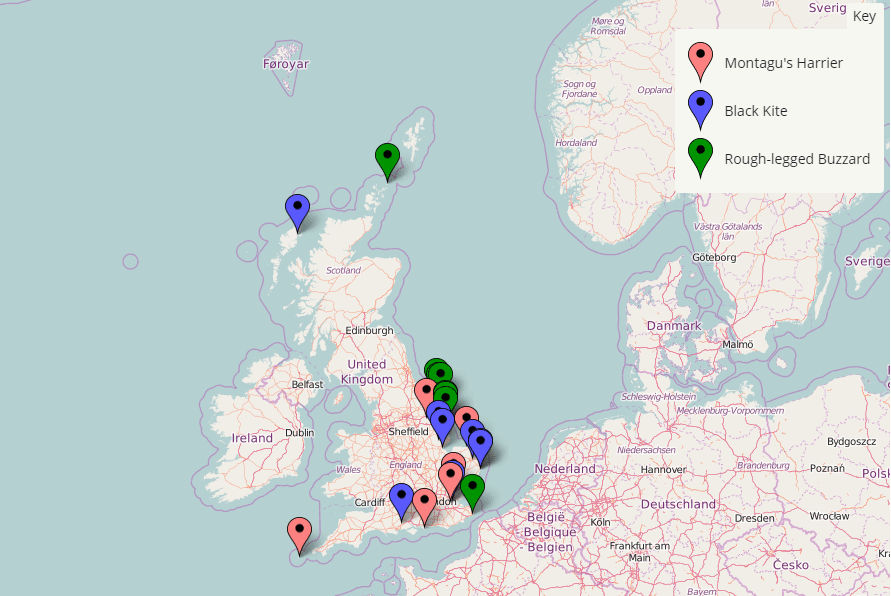
There were three somewhat typically brief Black Kites on offer this week although the first of the week’s five records in all was a lingering bird, still at Liurbost, near Stornaway on Lewis (Outer Hebrides) on the afternoon of 27th (it had been first seen there on 25th).
A trio followed on April 30th - the first of the day was seen for half and hour at Kirton Marsh (Lincolnshire) before appearing later the same morning at Coningsby. The second bird of the last day of the month was noted at Mucking (Essex) while the third was photographed at Ibsley Water (Hampshire) before heading towards the Avon Valley. The final one this week (and presumably not the jesse’d one) was at hen Reedbeds (Suffolk) on 3rd.
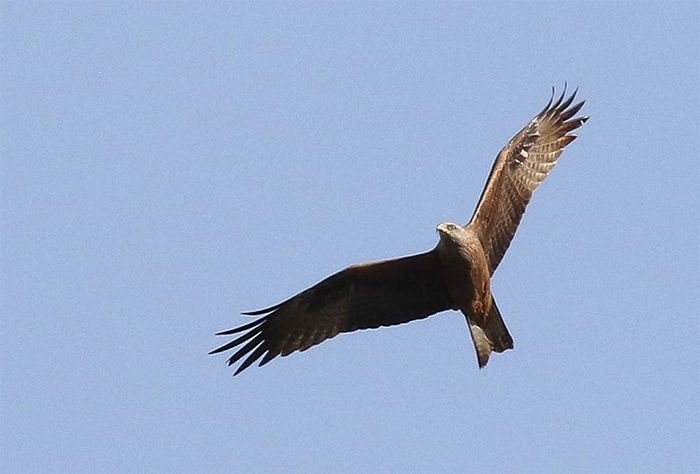
On Scilly, the male Montagu’s Harrier lingered around the northern half of St. Mary’s through until 30th with the same date seeing a satellite-tagged male roost up near Chelmsford (Essex) before departing north. What looked like a female Monty’s was photographed over Northfleet (Kent) on 1st while the 2nd saw the appearance of a female back at last year’s successful breeding site of Blacktoft Sands (East Yorkshire).
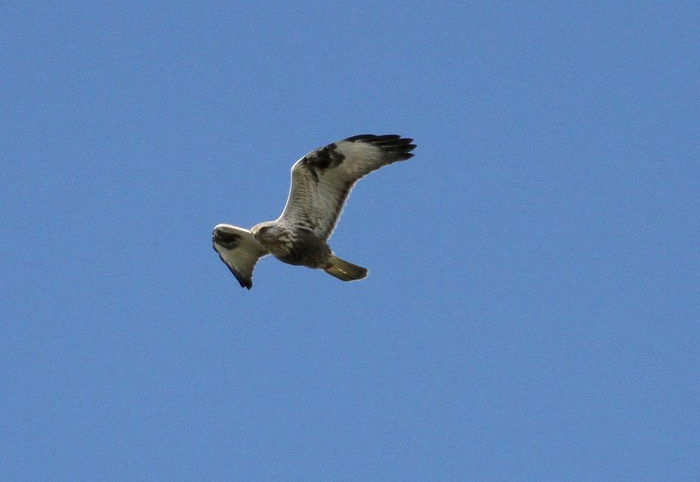
In East Yorkshire, a Rough-legged Buzzard headed south over Flamborough Head on the morning of 1st and presumably accounted for the records later in the day at Sewerby and then Spurn, where it set up camp until the following day, heading along to Easington before trundling back to Spurn. Quite whether this was the same bird seen heading over Filey (North Yorkshire) on 1st isn’t known, but it is quite possible…the second (or third) of the week was seen on North Ronaldsay (Orkney) on 2nd. What may well have been that East Yorkshire brid dropped down in to Lincolnshire on 3rd, seen at North Somercotes and Donna Nook.
Inadvertently overlooked last week was the record of a Honey Buzzard - reported from Dungeness RSPB (Kent) on 23rd.
Before going any further, let’s mop up the why’s and wherefore’s of the trapped Bonelli’s Warbler in Cornwall last week (our headline act if you remember from seven days ago).
Well, a little like turning up to Glasto or Latitude or Coachella and hoping to see your favourite band, what you actually get is a tribute act … less Mick’n’Keef and more the Counterfeit Stones … as what was at first thought to have been an Eastern turned into a definite Western after DNA results came back to the Cornish valleys.
No one had much to go on last week, bar a minimal tweet here and there (and the images have only just gone up online too) - so lessons learned all round. Its the name of the game, simple as that and it is still a smart April record.
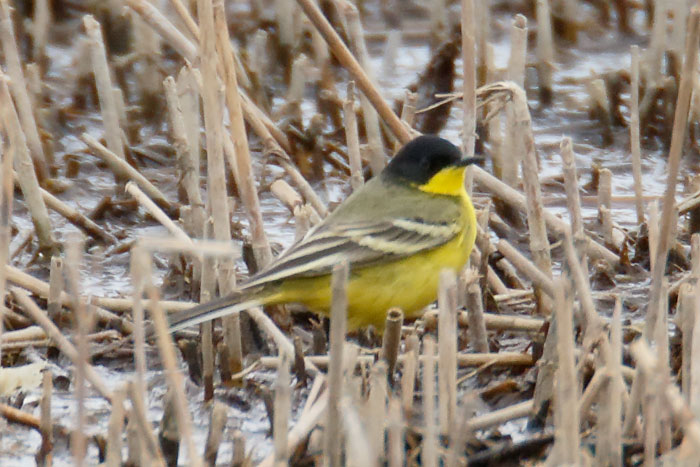
No such issues of confusion where the dazzling male Black-headed Wagtail found at Norfolk’s Titchwell RSPB was concerned - found in the early afternoon of 2nd, the bird showed well if a little infrequently across an increasingly soggy afternoon in the county becoming the second of the year (following that amazingly early bird in West Yorkshire) and the fourth for Norfolk (there are three acceptances to date - from Cley in July and August 1983 and from 2009 males at Kelling Water Meadow (on May 20th) and at Titchwell (on April 25th). Happily for any Bank Holiday dippers, the bird decided to perform again during the afternoon of 3th.
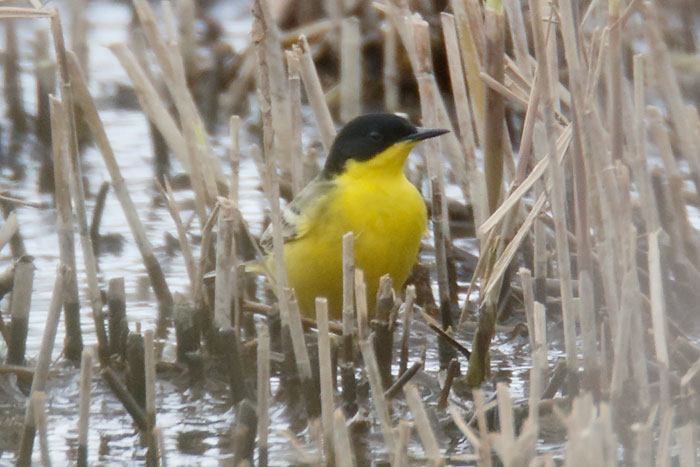
Despite many claims of this ultra-distinctive form, the number of accepted feldegg records remains really rather low (only just over 20).
In Dorset, the first Bee-eater of 2016 was found on Portland on 30th, the bird spent less than an hour around the Bill, heading from Southwell to the Obs., and then out to sea (the weather in the coming week could bring a sizeable multi-coloured dollop of these our way).
The fifth Woodchat Shrike for April (and the third for Cornwall) was discovered on the north coast, at Holywell on 30th and follows two singles on the Lizard and also on Scilly through the month.
A new singing male Savi’s Warbler was reported from the Norfolk Broads, at Hickling, on 1st and again on the afternoon of 2nd (though some locals observers disagreed with the identification on both subsequent occasions). After a week of no news (not helped by some rather gusty weather in East Anglia) the Minsmere male was heard again from 29th-3rd.
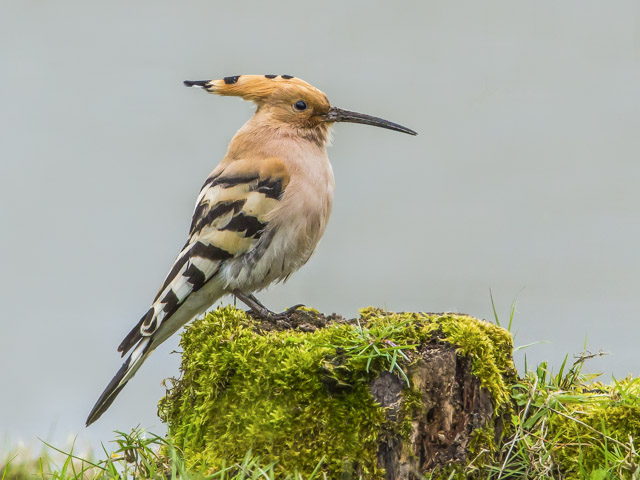
Mopping up a little warbler action whilst we’re in that ball-park - the Portesham Pallas’s Warbler was, after an absence of news, still in place on 27th and 28th (departing soon afterwards it seems).
Back to all things springtime - Hoopoes get the ball rolling again with 13 birds reported in all. The week began with three leftovers from last week, still at Land’s End (Cornwall), Romsley (Worcestershire) and Burgh-le-Marsh (Lincolnshire). They were followed by two on 28th, at Musbury (Devon) and reported from Newtyle (Angus) - the Devon bird remaining to 30th - on which date a new arrival was found at Branston (Staffordshire). Two Hoopoes were found on May Day, at Broxbourne (Hertfordshire) and Kessingland (Suffolk) with another East Anglia bird mentioned flying over the road at Narborough (Norfolk) on 2nd, one of four seen that day, the others noted at Land’s End (the second of the week there), Orpington (London) and Flamborough (East Yorkshire) - the latter bird still around on 3rd - when new arrivals were found at Sands of Forvie NNR (Aberdeenshire) and Shudrington (Gloucestershire).
The second Short-toed Lark of the year was found on Fair Isle (Shetland) on 2nd while three Serins were noted at the opposite end of the country, in Kent at Forness Point, Margate on 29th and Dungeness on 30th with the final one heading over Portland on 1st.
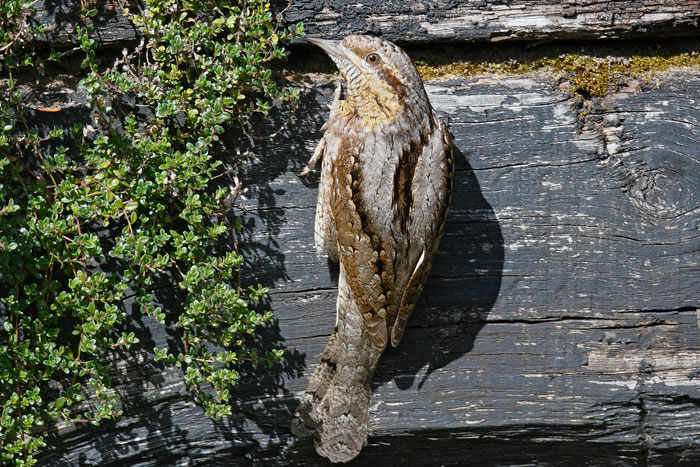
Up to 11 Wrynecks were logged across the end of April and in to May; the new review period began with birds still at Speen (Buckinghamshire) and Cley (Norfolk), the latter present to 29th. New on 28th were singles at Bornish, South Uist (Outer Hebrides) and at Portesham (Dorset) while the 29th saw a report of one from Rode Heath (Cheshire). Three new migrants were found on 30th; at Chamber’s Wall (Kent), Rainham Marshes RSPB (London) and Heacham (Norfolk) while fresh in on 1st were singles at Durlston Country Park (Dorset) and Barns Ness (Lothian) and on 2nd in gardens at Rawcliffe (East Yorkshire).
One of Flamborough’s 1w Richard’s Pipits remained on site to 28th while Norfolk birders had one head west at Sheringham on the same date with another on the golf course at Holme on 30th. The third Norfolk bird was also the second this week around Sheringham, one seen on Beeston Bump on 3rd.
After week’s of double figure totals for Great Grey Shrikes (even last week managed 11) we’re rapidly down to low single digits now, only three mentioned across the past seven days. A departing bird was on Shapinsay (Orkney) on 29th while May’s first day saw one remain at Cross Inn Forest (Ceredigion) and in the northwest, a Great Grey Shrike was seen on the Lancashire/Greater Manchester border at Delph Reservoir early in the morning but not subsequently.
The early indications are that, finally, the door marked “migrants” could be flung off the hinges as the new week gets under way - light warming southerlies are lining up any day now - and that can only be a good thing…
As expected, the sheer breadth and range of the scarce overshoots and more far flung vagrants goes up and up through the early days of May and there’s going to be plenty to keep an eye open for should those lovely snugly south winds come to fruition.
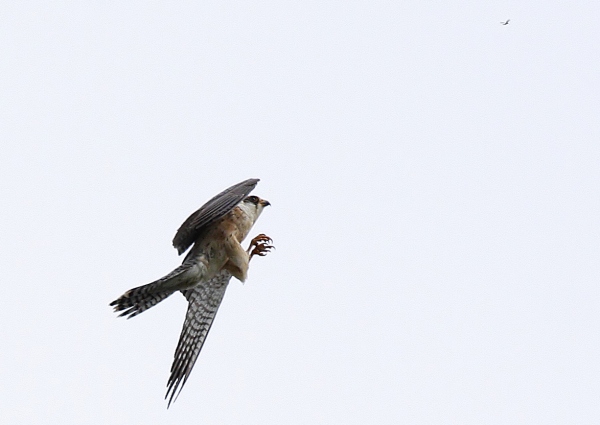
Prime candidate (in optimum conditions - and they could be on the way by the look of it...) is Red-footed Falcon - ahead of removal for the Rarities List, there were 47 records for the seven days that we’re drifting in to, including nine on 10th and 10 on 9th.
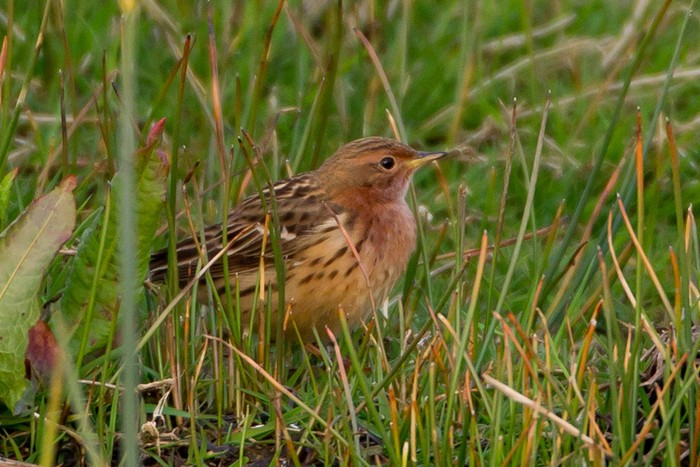
Red-throated Pipit is another candidate to keep eyes and ears open for, while upping the ante come the likes of Thrush Nightingale (there’ve been five on previous May 8th’s for instance) and, better still, the half a dozen Black-eared Wheatears and three Rock Thrush records that have dotted themselves historically through the week ahead.
Non-passerines? Well, the four “even days” of the next seven have all had a Collared Pratincole while May 5th has provided three Slender-billed Gulls (at Grove Ferry in 1999 and then two at Cley in 2000) and also Britain’s first Audouin’s Gull at Dungeness in 2003.
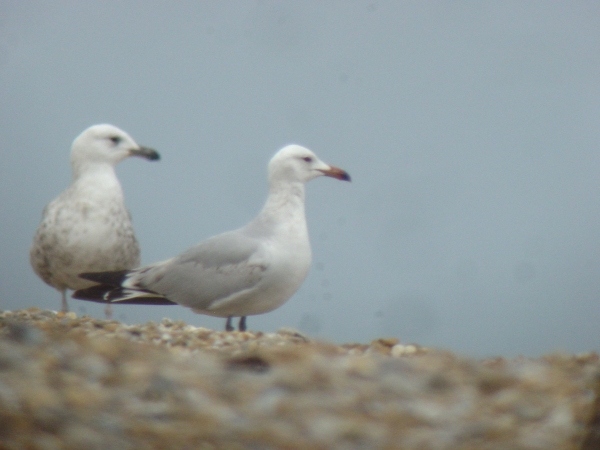
Quirky records abound too - amongst the many from the next seven days are the two Little Swifts on May 10th 1998 (in Cornwall and Cleveland) stands out, though not as much as the hugely contentious Rock Bunting in North Yorkshire four years ago. Rarer still, Britain’s only spring Yellow-browed Bunting - and the most recent one too - seen on Hoy (Orkney) on May 4th-5th 1998 (you can’t have a spring Chestnut Bunting or Meadow Bunting though…).
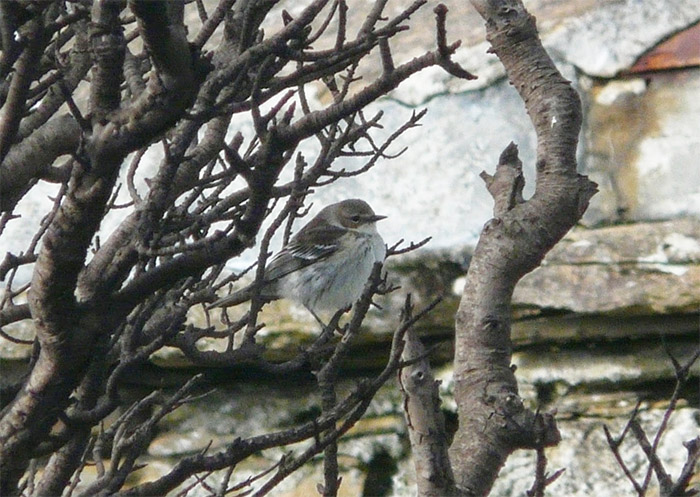
Bringing us full-circle, to another bird from the Nearctic that was (remarkably) relocated as it tracked north, is a further significant early May find on Orkney - the Myrtle Warbler on North Ronaldsay on May 7th 2014 reappearing the very next day at the far north end of Shetland, on Unst.
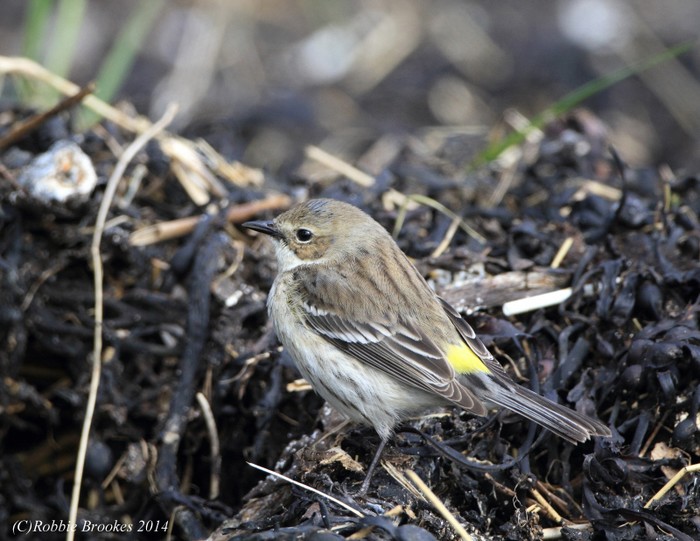
All shapes and sizes are coming our way - the southerlies are hours away…game on!
Mark Golley
04 May 2016
Please note: we put a lot of time and effort into sourcing and and producing the images, videos and graphics for each roundup. Some of you (probably Apple users) may notice some photos etc. that appear to have incorrect captions. Please try refreshing the page as they are correcty captioned. If after a refresh they are still showing the incorrect captions then please email us
Contributors websites
















